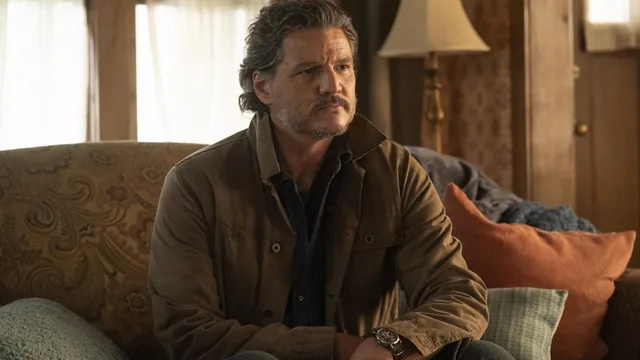
Ellie and Dina confront dangers after viral outbreak in Seattle
2025-04-07 21:00- Characters Ellie and Dina travel 600 miles through a post-apocalyptic Seattle after a violent incident.
- The series preserves deep character relationships, notably between Joel and Ellie, while introducing new challenges.
- The juxtaposition of survival narratives raises questions about justice, connection, and humanity's resilience.
Express your sentiment!
Insights
The second season of a popular TV adaptation explores the aftermath of a catastrophic viral outbreak, detailing the struggles of its central characters in a post-apocalyptic setting. Ellie and her friend Dina journey across a ravaged Seattle, facing new and old threats that challenge their survival in a world that has descended into chaos. Among the dangers they encounter are the remnants of society and other groups impacted by the outbreak. Motivated by a personal vendetta against a character named Abby, who has brought violence into Ellie's life, they find themselves in a gripping narrative centered around revenge. The series, known for its ties to a well-received video game, effectively captures the disintegration of civilization and the deepening bond between its characters. The depiction of the strong but tumultuous relationship between Joel and Ellie, along with the romantic tension between Ellie and Dina, adds depth to the storyline. Critics have praised the performances, particularly that of Bella Ramsey in her role as Ellie, but some fans question the adaptation's fidelity to the source material. The evolving story challenges the characters to navigate their emotions amidst the backdrop of violence and societal collapse. In a parallel narrative, a different story surfaces involving a deaf ex-con named Daniel Brennan seeking connection and justice after his release from prison. This thriller, airing on BBC1, sheds light on the issues of communication barriers and social neglect faced by people with disabilities, offering a contrasting perspective on survival in society. Both story arcs unfold in worlds marked by trauma, exploring themes of human resilience and the quest for agency amid systemic failures. As these narratives progress, viewers are left to ponder the complexities of their characters’ motivations and the unfolding consequences of their choices. The contrast between the animated search for vengeance in Seattle and the quieter, grounded struggles of a former inmate reveal different facets of humanity's fight for survival. How characters react and adapt to their circumstances serves as a testament to the enduring spirit innate within them, presenting a rich tapestry of human experience against the backdrop of a dystopian reality. These two narratives, while separate, resonate with similar emotional intensity, questioning the essence of justice, connection, and what it means to reclaim one's life after loss and trauma.
Contexts
The impact of viral outbreaks in fiction is a profound and multifaceted theme that resonates with readers and audiences across various media. Writers have long used the backdrop of pandemics or epidemics to explore human behavior, societal collapse, and moral dilemmas, allowing audiences to reflect on both personal and collective challenges. Notably, works like Albert Camus's "The Plague" and Stephen King's "The Stand" utilize viral outbreaks as catalysts to dissect the fragility of civilization and the resilience of the human spirit. These narratives often challenge characters to confront existential threats, revealing both the best and worst of humanity in crisis situations. Through fiction, we gain insights into the psychological and emotional ramifications of widespread disease, underscoring the importance of community and empathy in overcoming adversity. Moreover, the portrayal of viral outbreaks in fiction often mirrors real-world concerns about public health and the effectiveness of governmental responses. In many recent narratives, such as the television series "The Last of Us" or movies like "Contagion," the themes of trust, misinformation, and isolation are prevalent. These stories emphasize the necessity for scientific understanding and the ethical considerations that arise when navigating a crisis. By weaving complex characters and their moral decisions into narratives centered around disease, authors reveal the varying ways individuals and societies react to fear and uncertainty, augmenting the relevance of such tales in times of actual global health challenges. Fictional portrayals of viral outbreaks also serve as a form of societal commentary, often critiquing our modern lifestyle and interconnectedness. In an increasingly globalized world, the rapid spread of viruses is not just a fictional premise but a significant reality, which makes these narratives all the more poignant. The cautionary tales found in literature and film compel societies to acknowledge the vulnerabilities in public health infrastructure, and they challenge us to prepare for the unforeseen. As the world grapples with the realities of viral diseases, the fiction surrounding these themes has the power to educate, inspire, and mobilize action towards better preparedness and resilience in the face of future outbreaks. Finally, the role of speculative fiction in imagining alternate realities is crucial as it provides both a warning and a vision for what may come. It opens conversations about the ethical implications of bioweapons, genetic engineering, and vaccine distribution, prompting discussions about health equity and access. Stories often envision societies transformed by their encounters with viral threats, exploring dystopian outcomes and hopeful recoveries alike. Ultimately, the impact of viral outbreaks in fiction extends beyond mere entertainment; it serves as a reflective mirror for readers to examine their humanity, grapple with their fears, and envision a future shaped by courage, collaboration, and compassion.